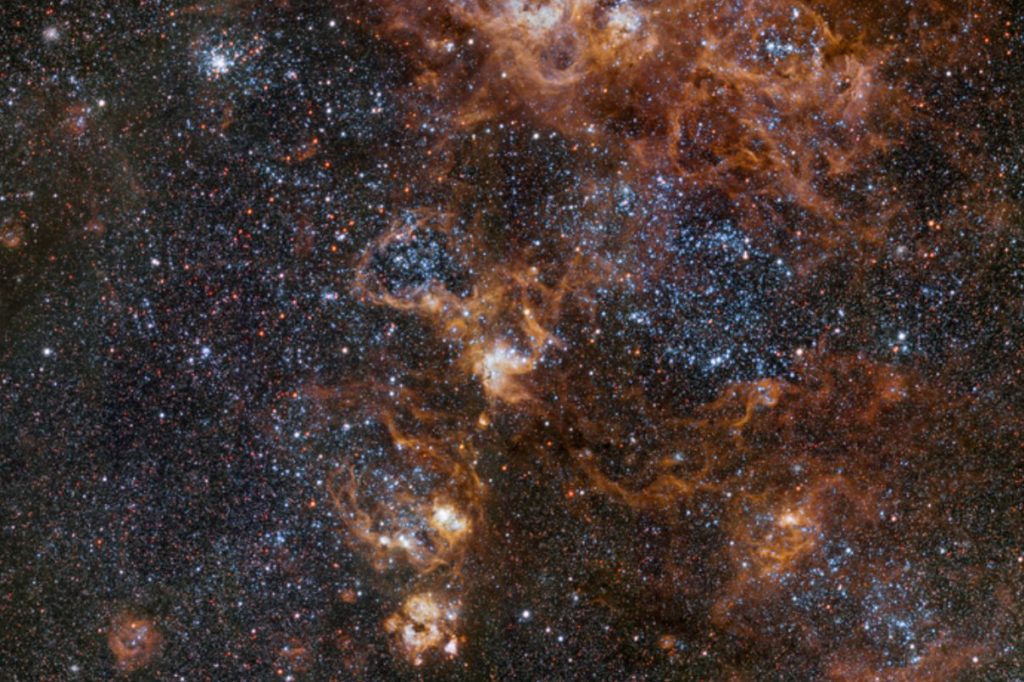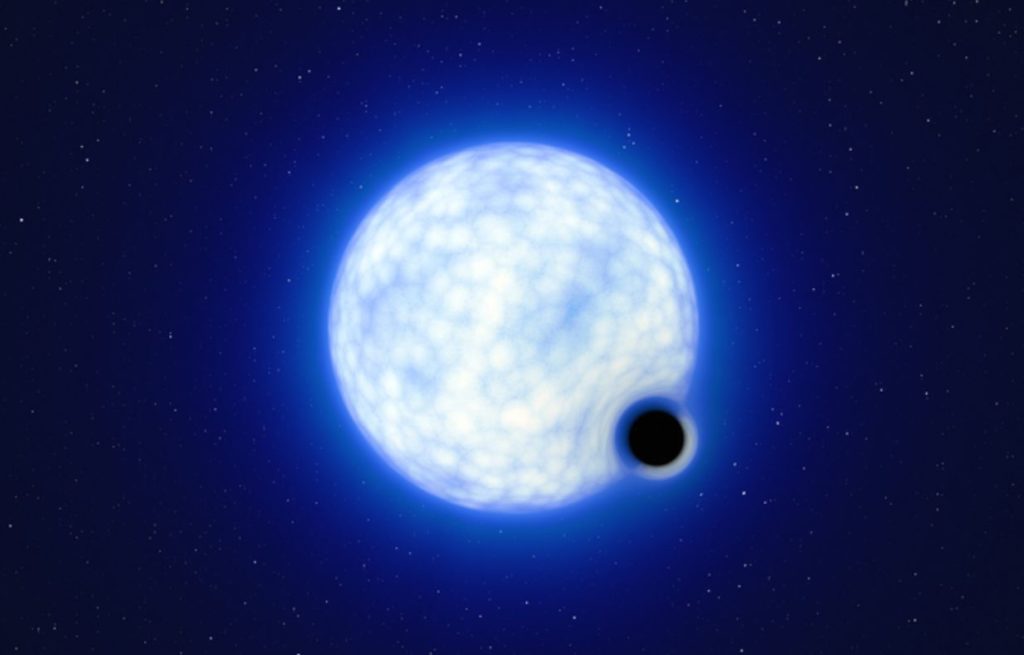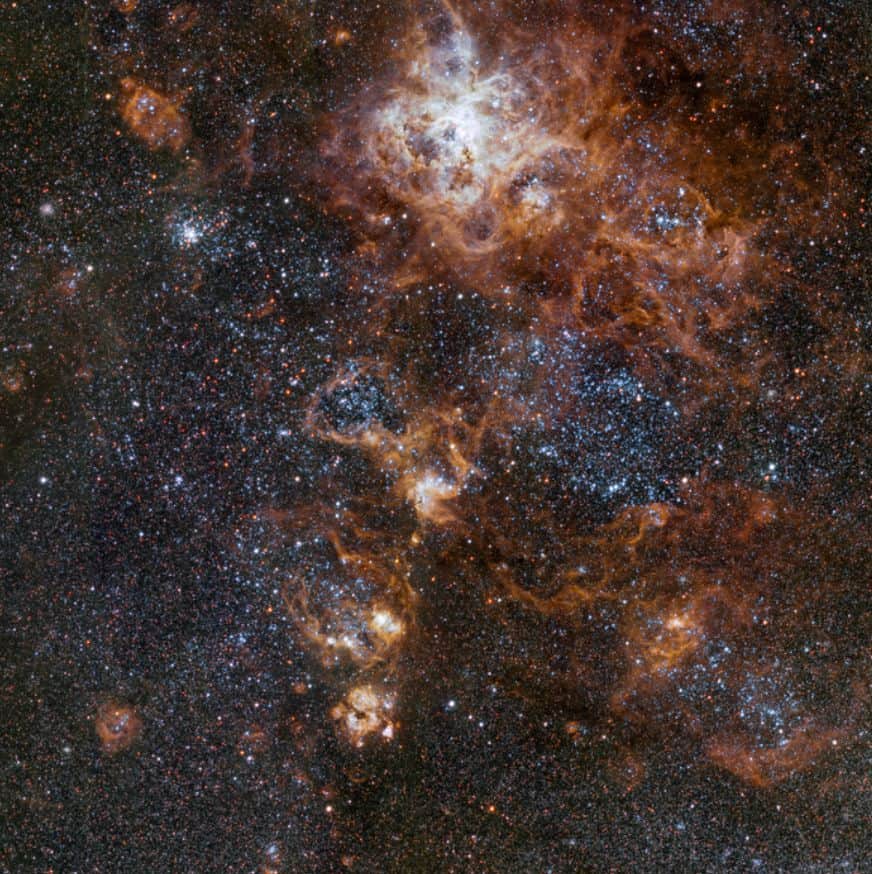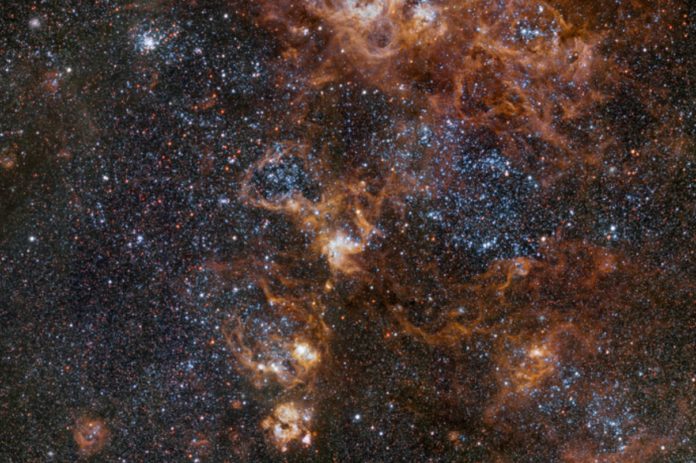A group of international experts who are well famous for debunking black hole finds has found a dormant black hole with the mass of a star in the galaxy next to the Milky Way called the Large Magellanic Cloud.
The team includes Kareem El-Badry of the Center for Astrophysics (CfA) | Harvard & Smithsonian, dubbed the “black hole destroyer” by his fellow astronomers.
For the first time, according to study leader Tomer Shenar, a Marie-Curie Fellow at Amsterdam University in the Netherlands, “our team got together to report on a black hole discovery, instead of rejecting one.”

The group found that the star that made the black hole had gone away without any sign of a big explosion.
Though several similar black hole possibilities have been presented, the team asserts that this is the first ‘dormant’ stellar-mass black hole to be unequivocally found outside of the Milky Way galaxy. Today, the research was published in Nature Astronomy.
When large stars reach the end of their lifetimes and collapse under their own gravity, stellar-mass black holes are created. This process leaves behind a black hole in orbit with a bright companion star in a binary, a system of two stars rotating around one another. If the black hole does not generate significant amounts of X-ray radiation, which is how such black holes are normally discovered, then it is said to be “dormant.”

The discovery was made possible by six years of observations done with the Very Large Telescope of the European Southern Observatory (ESO).
Given how prevalent astronomers think inactive black holes to be, co-author Pablo Marchant of KU Leuven says it is amazing that we scarcely know of any. The newly discovered black hole circles a bright, blue star that is 25 times the mass of the Sun and is at least nine times as massive as the Sun.
Black holes that are dormant are particularly difficult to locate since they do not interact with their environment very much.
According to co-author Julia Bodensteiner, a research fellow at the German ESO, “for more than two years now, we have been looking for such black-hole-binary systems. I was very excited when I heard about VFTS 243, which in my opinion is the most convincing candidate reported to date.”

Nearly 1,000 enormous stars in the Tarantula Nebula region of the Large Magellanic Cloud were combed by the team to find VFTS 243. They were hunting for stars that might be accompanied by black holes. It is quite challenging to determine whether these companions are black holes because there are so many other potential explanations.
“As a researcher who has debunked potential black holes in recent years, I was extremely skeptical regarding this discovery,” adds Shenar.
El-Badry, a co-author of CfA and the “black hole destroyer” as Shenar refers to him, shared the doubt.
“When Tomer asked me to double-check his findings, I had my doubts. But I could not find a plausible explanation for the data that did not involve a black hole,” adds El-Badry.
Furthermore, the discovery provides the scientists with a rare window into the processes that surround the birth of black holes. There is some debate over whether or not a strong supernova explosion occurs when the center of a dying big star collapses, creating a stellar-mass black hole.
According to Shenar, the star that gave rise to the black hole in VFTS 243 “appears to have collapsed entirely, with no sign of a previous explosion.” Although new evidence for this “direct-collapse” scenario has begun appearing, “our study arguably provides one of the most direct indications. This has enormous implications for the origin of black-hole mergers in the cosmos .”
The Fibre Large Array Multi Element Spectrograph (FLAMES) instrument on ESO’s VLT used six years of observations of the Tarantula Nebula to discover the black hole in VFTS 243. Astronomers can use FLAMES to look at more than a hundred objects at once, which saves a lot of telescope time compared to looking at each object separately.
Even though they are called the “black hole police,” the team welcomes scrutiny. They hope that their work will help find the thousands of other stellar-mass black holes that are thought to orbit massive stars in the Milky Way and the Magellanic Clouds.
“Of course, I expect others in the field to pore over our analysis carefully, and to try to cook up alternative models,” El-Badry adds. “It’s a very exciting project to be involved in.”
Image Credit: ESO/L. Calçada
You were reading: A Big Black Hole, Maybe Dormant, 160,000 Light-years Away Gives Its First Glimpse
